Erkki Kurenniemi’s Radical Documentation
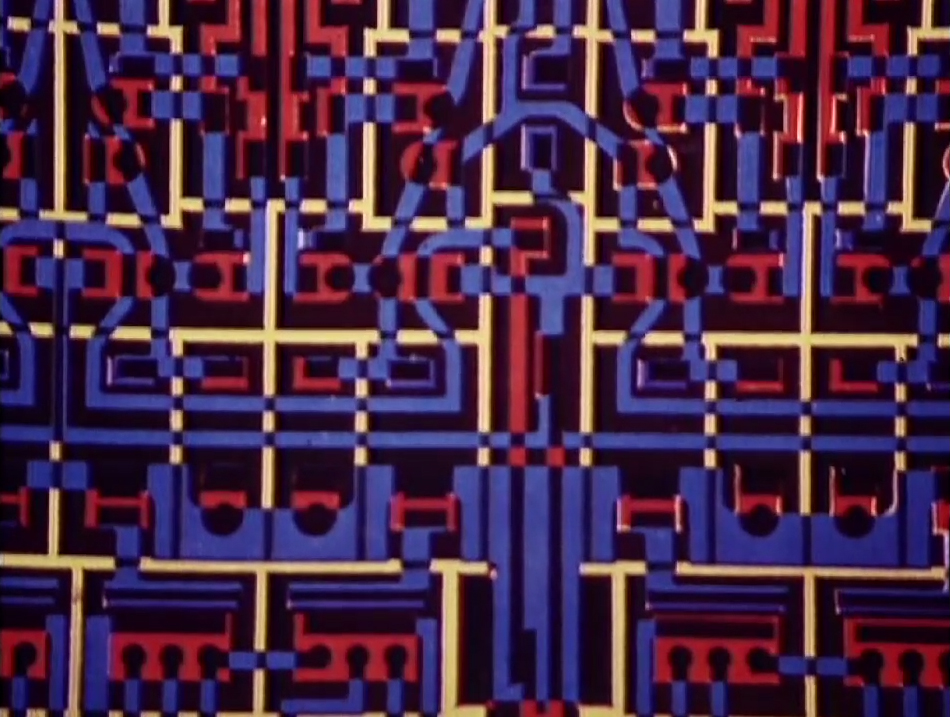
The release of Mika Taanila’s The Future Is Not What It Used To Be in 2002 can be seen as a starting point for the more recent interest in the life and work of the enigmatic Finn, Erkki Kurenniemi (b. 1941). Taanila’s moody and rhythmic essay film has allowed the art world to (re)discover the visionary work of Kurenniemi, from his early experimental films to his advancements in electronic music, cybernetics, and media theory.
Since 2002, Kurenniemi has garnered a well-deserved amount of notoriety. His 14 short films are now part of the Finnish National Gallery’s (FNG) permanent collection, and the Central Archive at FNG recently acquired an enormous amount of his output and belongings from 1942 to 2012. A handful of his musical instruments are held by the Musicology Department at the University of Helsinki and the Museum of Music in Stockholm, while others are part of Ralph Lundsten’s private collection. And just this year, material from Kurenniemi’s personal archive and some of his early media art (i.e. Master Chaynjis) were on exhibition at the Museum of Contemporary Art Kiasma in Helsinki, Finland. Furthermore, the 2014 International Film Festival Rotterdam featured a special program of “Kurenniemi’s Cinematic Collaborations.”
Though, the most significant and talked about event has been the partnership between dOCUMENTA (13), KURATOR, FNG, and Constant. Their project has been to create and explore an interactive Erkki Kurenniemi archive made up of the vast amount of diaries, audio logs, videotapes, photographs, and ephemera that Kurenniemi has collected over the last 40-or-so years. Kurenniemi’s obsessive documentation of his life follows a cyberpunk affectation of Moore’s law: that by 2048 quantum computers will be able to make sense of the materials contained within the archive by recreating his essence, his persona as artificial intelligence. On Kurenniemi’s 107th birthday, this persona will be premiered as a multimedia retrospective of his life, titled simply 2048.
If Julian Assange is a real-life Johnny Mnemonic, Erkki Kurenniemi must be a real-life Erythrina.
The exhibitions in and around dOCUMENTA (13) and the discussions that have followed mostly focus on the Kurenniemi archive, his techno-fetishism (or enthusiasm), and more broadly his place as a music and media theorist; however, little has been said about his film work – even though Taanila uses excerpts from Kurenniemi’s films in The Future Is Not What It Used To Be, they act more as reference points for expressed ideas about music and technology, rather than objects to be analyzed on their own terms. A huge contributing factor to this critical deficiency is that Kurenniemi’s films were never released, or even finished, during the time he was producing them (1964 – 71), and they still have not been properly distributed. That was until October 2013, when Perttu Rastas of FNG and Visible City uploaded Kurenniemi’s films to Vimeo, in what seems to be a preparatory move towards a DVD compilation (though the details are a bit convoluted).
My aim here is to build upon the recent discussions about Kurenniemi by introducing some insight into his film production. Following Jussi Parikka, I will address Kurenniemi as more of a symptom than a person; as Parikka explains, “[t]his focus on symptoms does not imply a negative connotation of sickness and failure; rather, it means that there is something deeply symptomatic about his artistic and intellectual career” (“DIY”). Though the symptoms of Kurenniemi’s life are most apparent in his archival efforts and 2048, I find that the impetus or main point of contagion lies in his early film work, because they represent the first instance of radical documentation in his career, where he attempts to recreate subjective experience through technology. A long way off from A.I., but we’ve all got to start somewhere.
/
“I like to think that the globe will turn into a museum-planet where man’s strong influence on the biosphere will be stopped.”
38:42 – 28:57
\
In the early 1960s, Kurenniemi was a physics student with an avid interest in electronic music. As a young boy he had been introduced to computing technology through his father, who worked for an insurance company. While Kurenniemi was not initially interested in the practical applications of computing, he did seem to be swept up in the cybernetic dream shared by the risk analysts, economists, Silicon Valley entrepreneurs, and many scientists of the day: that through data-driven computing technology, “the old hierarchies of power can be replaced by self-organizing networks” (All Watched Over).
However, in Kurenniemi’s hands, this utopic vision of technology was more grounded in the counterculture revolution, rather than the overly rational individualism that seemed to dominate much of the risk analysts’ et al. worldview. Instead of computing technology inherently containing the ability to stabilize, to advance our understanding of and function in society, the ideological basis of Kurenniemi’s approach is located in the potential advantages generated through the misuse of technology: the ability to destabilize, to challenge, resituate, and/or retool normative cultural experiences through human-techno interaction.
/
“Technology cannot take control as long as society misuses it.”
12:22 – 12:26
\
By 1961, Kurenniemi was working as a programmer for the University of Helsinki physics department’s analog computer. By 1962, he was commissioned (without pay) to develop a circuit based computer for the department of musicology. And by the 1970s he had established himself as a prominent figure in the developing world of electronic music. Here is Kurenniemi and his DIMI-O, which he developed at Digelius Electronics in 1971:
With the design of DIMI-O – as with most of his instruments – Kurenniemi was able to create a non-traditional human-computer interaction in order to produce an unprecedented artistic experience. The most important property of this approach to instrument design is that it is inherently communal, both between groups of humans and different technologies (as a supplement, see DIMI-S, aka the Sexophone). The act of artistic creation is then dispersed among the engineer, the instrument, and the performers. As a result, creative authority and, by extension, other structures of authority are challenged. While this idea has analogs in many performance based avant-garde movements of the time (happenings and the emergence of performance art, The Living Theatre and The Panic Movement, etc.; along with the “Death of ____” trend in structuralist aesthetics; communes and free love…you know, The 60s…) Kurenniemi’s conceptual base stands out because decentering authority relies on new media; a paradigm shift that hasn’t been fully realized until the last decade or so.
/
“Future computer-music composers are like industrial designers or trendsetters.”
09:08 – 09:16
\
During the time between university and manufacturing DIMI-O, Kurenniemi shot and edited his 14 short films. Since they were only screened for a few of his close friends, the films have existed in a mythical space, more part of Kurenniemi’s history than of film or art in general. He had planned to personally score each of them, though none of the soundtracks were added until 2002, when he worked with Mika Taanali to complete six: Electronics in the World of Tomorrow, Flora and Fauna, Computer Music, The Punched Tape of Life, Florence, and Carnaby Street. And since Kurenniemi suffered a stroke in 2005, Perttu Rastas plans to finish the soundtracks for the remainder. Even so, the films (completed or not) have remained inaccessible to the general public until their recent upload to Vimeo.
Media historian Erkki Huhtamo notes that Kurenniemi’s career is made up of “brilliant fragments rather than of finished ‘masterworks’” (“Techno-Visionary”). Due to Kurenniemi’s convergent, but wide ranging interests and careers (“Here is a – partial – list of his credits: nuclear scientist, composer, inventor of electronic music instruments, experimental filmmaker, industrial robotics specialist, computer graphics artist, science exhibition curator, obsessive recorder of his own life” [ibid]), he spread his production of art quite thin and often left projects incomplete. This has been read by certain commentators (Jyrki Siukonen) as a reason to highlight Kurenniemi’s amateurish approach, though others (Jussi Parikka) are much more lenient with their characterizations by connecting him with notions of “tinkering” and DIY ethics that rely on the simultaneity of theory and practice. I find the latter to be a more well-rounded view, especially with its connection to the hobbyist-artist, who is destined to overthrow elitism and commercial constraints (!), outlined in Julio Garcia Espinosa’s “For an imperfect cinema”:
“The future lies with folk art.”
The relative incompleteness of Kurenniemi’s films creates a peculiar instance of artistic production where an art object is completed or legitimized by its extratextual environment. Like the discovered output of outsider artists who finally find legitimacy on the gallery wall, Kurenniemi’s films have been given the chance to self-actualize on Vimeo. This is the start of a complicated ontology where the inclusion of an art object in an archive provides the public with something that is altogether complete and incomplete.
I find this to be quite important to understanding Kurenniemi’s films, especially since they only exist because of the archive.
Their archival existence takes on two separate, though not mutually exclusive, forms: First of all, with Kurenniemi’s preference for documentation over staging and his use of home movie technology and aesthetics, his approach to filmmaking is indicative of the archive. Secondly, and more obviously, the films are literally contained within an archive (at FNG and by extension Vimeo[1]), and due to this position, their mythological status has been overturned – or to use Levi Bryant’s understanding of objects, the films are transformed from dim to bright objects through the archive: their relatedness (“Above all, it is not objects but their relations that interests me”) is increased and, in turn, the films’ potential cultural relevance expands. There is then an odd temporality where the films’ date of production becomes obscured by their date of inclusion in the archive or their date of upload to Vimeo. In other words, due to their history, the moment at which any of them were completed requires the delineation of a system rather than a specific day and time.
Moving forward, I will look at the films in two stages, both of which will rely on particular ideas surrounding film, technology, and archives. The first will be concerned with Kurenniemi’s films and how they represent his initial attempt at “archiving,” and the second will briefly explore the relationships between his artistic production and the 2048 project.
/
“Digital as such does not mean anything. In this case it refers to ‘memory.’ It could refer to a tape recorder, an audiotape, which is another memory tool.”
23:56 – 24:21
\
A central component of Kurenniemi’s films is their documentary approach. His lens gathers data from both public and private spaces like any unassuming home movie camera would: documenting friends, family, lovers, passersby, along with landscapes and all the other peculiarities one can find in the real world. The footage is then cut up, rearranged, and put to new rhythms at a later time, giving them a different context or meaning. This is to say that the films appropriate reality in an effort not only to document the environments or people on the other side of the lens, but also to try and (re)create emotional or ideological states through the language of film.
Kurenniemi’s The Intoxicating Thread of Life gives us a perfect example of this approach.[2] The film documents a group of Kurenniemi’s friends as they ingest psychedelic mushrooms. Instead of presenting an uninhibited view of the drug experience, Kurenniemi develops the film in three stages, each of which uses a different formal approach to document the effects of the drug. At first, through the use of overlay and other editing techniques, the spectator is presented images that mimic a hallucinatory experience, as though the camera itself has taken a hit. Then there is a dramatic shift as the film adopts a cinéma vérité style: the camera becomes a fly on the wall, simply watching the subjects experiment with their surroundings. And the final section is made up of footage from a psychedelic rock concert, documenting the different lighting effects used to create and/or add to the hallucinatory experience of the concert goer. In Intoxicating Thread, the representation of the psychedelic experience is approached dynamically through experimentation with visual language, and the film is able to both document and recreate the effects of psychedelic mushrooms for the spectator.
In order to understand this method fully, we cannot rely on the general definition of documentary as nonfiction film that approaches its subject objectivity. Instead, Vivian Sobchack suggests that we see documentary relationally, along a spectrum where home movies are at one end, fiction is at the other, and documentaries are in the middle. For Sobchack, these groupings are further delineated through the spectator’s experience with the audio-visual event: “the more dependent we are on the screen for specific knowledge of what we see in the film experience, the less likely we are to see beyond the screen’s boundaries and back into our own life-world” (“Towards a Phenomenology”). The home movie, then, is the least dependent, asking the spectator to see through the screen and onto remembered experience, while fiction is the most dependent, asking the spectator to bracket what is posited as real on the screen. Sobchack‘s discussion provides a base to explore the formal characteristics of Kurenniemi’s films and how they use aspects of the home movie to produce collages that are situated somewhere between documentary and fiction.
We are not in uncharted territory, here. From the films of Dziga Vertov to Jean Vigo’s Á propos de Nice (1930), early experimental documentaries expose the rhetorical potential of visual language by disrupting the objectivity of a recorded event. This does not mean that the subjects of the film are relegated to fiction; rather they offer the spectator a representation of reality that is not so easily categorized by dominant binaries like real/fake or true/false. This is the radicalism that certain prominent mid-century experimental filmmakers latched onto. To be a bit reductive, there are two dominant modes at work here: the long shot investigations into real time of which certain films by Andy Warhol and Michael Snow are emblematic; and then there are filmmakers like Stan Brakhage, Bruce Baillie, and Marie Menken whose films are interested in the possibilities generated by montage, overlay, and other editing techniques.
Both groups rely heavily on a documentary approach, but the latter seems to be more preoccupied with psychology, or more specifically, states of consciousness. This is not to say that the films themselves are an effort to recreate consciousness or an individual through the documentation of their surroundings – the wondrous achievement of a Brakhage film is not that he gives us Stan Brakhage on the screen, but that he is able to solidify the medium’s potential to project the internal eye – and so, at the most, the spectator interacts with the essence of the filmmaker via idiosyncrasy.
I find that Kurenniemi’s films fit perfectly alongside those in the second category, particularly Brakhage, Baillie, and Menken. These filmmakers are obsessed by similar themes (nature, industry, sex, memory) and use similar aesthetic techniques to explore them (quick cuts, overlay, inclusion of found object, landscapes, minimalist soundtracks). But most importantly is how they use film to interrogate the intersection of human experience with the natural and social worlds through a non-narrative, documentary approach.
Take for example the strong resonance between Kurenniemi’s Flora & Fauna (1965/2002) and Brakhage’s The Domain of The Moment (1977), where images of nature constantly growing out of its self are counteracted by those of death and decay.
Or Kurenniemi’s Ex nihilo (1968) and Baillie’s Mass for the Dakota Sioux (1964), where textured overlays of urban life create a dreamlike attack on bourgeois concepts of history.
Or the playful, painterly use of moonlight in Kurenniemi’s Florence (1970/2002) and Menken’s Notebook (1962) – (the quality of the YouTube stream inhibited my ability to capture a proper screenshot from Notebook; in this instance, the poor image was too poor to be upheld).
The above films are part of a much wider generational discontent (a film by ANGER) with authoritative images, yet for the above filmmakers, the employment of a documentary approach seems to highlight the overall affinity for subjective states. To use Sobchack’s parameters: Kurenniemi, Brakhage, Biallie, Menken and many others push their content from home movie or documentary towards fiction, through formal experimentation, which provides the spectator an increasingly autonomous reality that exists “only in its mediated presence to perception” (“Towards a Phenomenology”). This is not necessarily fiction as such, because the initial documentary approach leaves out the contrivance of the event and instead asks the spectator to pay attention to the contrivance of the visual language.
Kurenniemi’s films use this approach to radically document his environments, along with emotional and ideological states. His 14 short films are the first artistic enactment of the symptoms that become the main fixation of his later diaries, video logs, etc., that now make up the base of the 2048 project. These symptoms can be divided into three categories: altered states, sex, and technology. While Kurenniemi is able to add remarkable insight to the altered states (Coveted Beauty, The Intoxicating Thread of Life) and erotic modes (Sex Show: 1 & 2), I find that the really novel feature of his catalog lies in the films that use new media as a central metaphor for structuring concepts of identity, memory, and nature.
/
“In the early 21st century people and computers will begin to merge into hyper personas.”
11:35 – 11:42
\
Kurenniemi has been called a visionary, especially when it comes to his speculations about digital technology. In his 1971 essay, “Message is Massage,” he writes about the coming of a multimedia computing device that will fit in your pocket, which integrates everything from telecommunication to entertainment. Compared to popular science fiction conceptualizations of future computing devices in films from the same year, like The Andromeda Strain, Silent Running, and THX 1138, Kurenniemi’s pocket-computer seems far beyond the still-hulking machines shown in these films. That being so, it is very interesting that Kurenniemi’s films that are concerned with computing technology are not plain science fiction. They leave behind the future projections the genre and instead make use of structirualist experimentation to create a liminal present where natural and synthetic existences help make sense of each other.
To expand, let’s just take a closer look at some films:
Electronics in the World of Tomorrow (1964)
The bulk of the film consists of close up shots of found objects: circuit boards, transistors, computer chips, diagrams, minimalist designs, some sections of a comic book, a group of lab workers, a sundial… Some of the actual objects are in front of Kurenniemi’s lens; others are clippings from magazines, possibly from the titular article, “Electronics in the World of Tomorrow,” which is included at towards the beginning of the film. These items are continuously spinning and melting into one another by falling in and out of focus. With these tricks and manipulations (both in-camera and out), Electronics emphasizes the aesthetic potential of the objects, allowing the cold, unearthly components to become something glistening and attractive – like a psychedelic pop art, turning beautiful the banal parts of a techno-present.
This visual display is offset by the inclusion 9 seconds of B&W footage (off-the-cutting-room-floor of Kurenniemi’s first film, Winterreise[3]): a man on a small boat with an idyllic cabin in the background, followed by a blindingly quick POV shot of a sled ride. The writer(s) over at Eye of Sound propose that this footage gives “humans the status of a memory.” There is definitely an aspect of temporal disparity at work here: the bright colored images of the found objects suggest a newer, more recent, or maybe even future time, especially set against the dated B&L that tints the images of humanity.[4] As a result, the spectator experiences a certain loss when the human element is introduced; a lull that sets in before we are propelled back into the dizzying state of blissful technological indulgence. These 9 seconds of B&L film, then, do seem to turn humans into a memory or dream by using a flashback device. However, since the content of the flashback is a representation of pastoral human existence and is sharply at odds with a world filled with mesmerizing components, then it is hard to say if this memory is fond or not.
I find that Electronics gives us a perfect example of the way Kurenniemi uses the immediate environment of the 1960s to comment on computing technology’s complicated cultural position. The manipulation of artifacts from the present only interacts with the future tense by affect, and when put in contrast with footage of humanity’s pastness, the spectator is asked to see both humans and technology in a new way.
This mutual relationship between humans and tech destabilizes the notion that computers and other technological advancements are simply tools with a blank slate waiting to be used for good or evil by the humanitarian or the mad-scientist (something that, sadly, is still a major trope in popular science fiction narratives). Instead, the liminal present Kurenniemi creates suggests a reality where technology interacts with individuals and groups at a much more existential level.
Besides Electronics, a better representative of this notion is Kurenniemi’s 6th attempt at filmmaking:
The Punched Tape of Life (1967)
The film revolves around four events, three of which take place on the shores of a lake: a trio (two women and a man) drunkenly play in a beached boat, fish their bottle of alcohol from the lake, and drink; another woman sits alone in the reeds, looking demure, forlorn, as the camera paints her portrait; and then there are images of the bridge that connects one side of the lake to the other. The fourth event is made up of images of punched tape data continuously flowing from a computer’s readout. Kurenniemi’s montage alternates between these four events, allowing each to come into contact at some point or another.
One reading could be that, like the camera, the punched tape records data from the other three events, a sort of automated diary collecting as many details as it can. (FUN FACTOID: Konrad Zuse, who invented the first Turing-complete computer, used 35 mm film stock as punched tape data storage for his early binary computer, the Z1.) The cuts between events, at least between the punched tape and the scenes from the lake, would then suggest a meanwhile, where by some unexplained mechanism the humans and their environment become input data for the punched tape output. Here, the film becomes somewhat ironic due to the discrepancy between the obvious emotive states of the three friends and the woman in the reeds, and the passive data streaming from the computer.
What the above reading (straw man) leaves out is one of the most central images in the film: the bridge. In order to fully include this image, we need to abandon parallel montage for the montage of attraction, the 1+1=3 of the Kuleshov Effect; temporality and narrative competence fall to the wayside and instead the focus shifts to the images’ associative meanings. Each event then becomes like one another in some way. I find that one of the shared components is ways of seeing: the trio is part of a group experience of intoxicated joy; the woman in the reeds, on the other hand, experiences nature in solitude, through a contemplative emotional state; the bridge, like all transportation technology, not only effects travel time, but also allows a different perspective – walking across a bridge over a lake from point A to point B differs greatly from walking around a lake between the same two points; and the punched tape allows for a way to process and store data differently from any other device. The human and technological elements are not separate, they work together to express an existential problem that the isolated events cannot handle on their own. In Punched Tape, technology becomes more than a tool simply to serve progress, and instead becomes integrated with the human sensorium.
Flora & Fauna (1965)
For me, the psychedelic pop of Electronics and the perspective shifts of Punched Tape culminate in Flora & Fauna to realize a cybernetic dreamscape where the natural and the synthetic join together as one, similar to the ecology outlined in Richard Brautigan’s 1967 poem, “All Watched Over By Machines of Loving Grace”:
I like to think (and
the sooner the better!)
of a cybernetic meadow
where mammals and computers
live together in mutually
programming harmony
like pure water
touching a clear sky.
In Flora & Fauna, Kurenniemi uses in-camera superimpositions of plant and insect life along with different light manipulations to create an uncanny view of the natural world. The spectator is given an environment that we are familiar with, ants, flowers, spiders, trees, leaves, etc., but these images are brought into a new dimension with the use of overlay, focus and zoom ticks, and most importantly through the use of light.
At first the spectator is given the wondrous unknown intelligence of the oceanic, like the waves of a Technicolor Solaris:
And then as the film comes to a close, we end with a more recognizable light source, the blinking lights of a console or some other form of hardware:
While Kurenniemi appropriates computer readouts in Computer Music and The Punched Tape of Life for aesthetic effect, I find that Flora & Fauna moves further and tries to give the spectator an early depiction of how a computer sees. By (mis)using film technology, Kurenniemi posits a liminal present where he imagines the parallel functions of computational data analysis, the natural and the synthetic existing simultaneously.
Soon after Kurenniemi produced Flora & Fauna, Steina and Woody Vasulka begin their experiments with video technology, where the relationship between the natural and synthetic are further explored. I find that the mutual existence between nature and technology in Kurenniemi’s work is a move towards later work by the Vasulka’s and others, who visualize an increasingly strong link between the digital and the body, until they become inseparable.
/
“The history of our time can be reconstructed.”
2:45 -2:47
\
Jyrki Siukonen proposes that Kurenniemi’s 2048 project is a failed novel, a misguided effort to exploit the tedious and the banal. While I find the evidence behind his argument to be very interesting – from Kurenniemi’s diary: “Today I have once again started the novel 2048, yet again for nothing. I just uncorked the second bottle of wine” (Diary 1 July 1989, EKA) – it seems to me that Siukonen’s assessment precludes failure through a narrow view of what a novel can be. Siukonen concludes that there is “no artistic line of any kind at the heart of Kurenniemi’s project, only a monotonous thought of the continuance of individuality even after death” (“Dead Computers”). This approach engages in the naive bias that traditional forms of artistic representation are better suited to depict contemporary experience compared to those that engage directly with new media.
I find that throughout Kurenniemi’s career he has moved further and further away from this conceptualization of how art functions. The most convincing evidence is his reliance on democratized media to radically document his environments. First with his use of the 16mm camera and second with his use of the ever-expanding amount of technological gadgets designed to help us catalog our lives, from the personal computer to Apple’s Newton MessagePad, from video camcorders to cellphones. Instead of continuing to write a novel that attempts to engage new media through established language, with 2048 Kurenniemi has conceptualized a way to expand the understanding of narrative by exploiting the actual technologies used to document our experiences.
If we are going to assess 2048 at all, we need to first understand that, right now, it does not actually exist (however, this does, so does this and especially this ). By doing so, we can then get around rejecting the legitimacy of the projects through arguments about how Kurenniemi may or may not be a misguided techno-fetishist hell-bent on preserving his spot in an afterlife. Today, as it stands, 2048 is only a problem to be solved, a challenge that brings together the symptoms of Kurenniemi’s career.
Similar to his instrument design, Kurenniemi becomes a coauthor, part of a system of people and technology working together to create an unprecedented artistic experience. A cursory glance at the Kurenniemi Archive Logbook will show just how difficult it is to deal with the divergent materialities of Kurenniemi’s personal collection. It will take a team of archivists, programmers, artists, and media theorist years to complete the interactive archive, and to do so, they will have to invent new approaches and new systems of archiving. Even then, we cannot expect to be able to recreate Kurenniemi out of the accumulated data: “What can be resurrected from the archive is always a different patchwork creature, or assemblage, strung together from various files and transcripts” (“Slimy Traces”).
Nonetheless, the project is very important because Kurenniemi’s (second act of) radical documentation literalizes the modern obsession with the data body, the individual experienced through big data, either willfully or through surveillance (though the difference between the two may only be a matter of semantics). The answers that 2048 will one day produce are integral to how the individual is understood both publically and privately. In a world where the ubiquity of “the digital” has already dissolved the distinction between on- and offline, Kurenniemi still challenges us to come to terms with how new media shapes the human condition. It is now in our hands to find proper outlets of misuse.
/
“I tend to think I have seen enough of this cacophony. I have no greater desire to prolong my life… But out of curiosity I would make a backup if it was possible, and include a note saying: Activate only when absolutely necessary.”
49:47 – 50:12
\
Sources:
All Watched Over by Machines of Loving Grace. Dir. Adam Curtis. BBC Two, 2011.
Huhtamo, Erkki. “Kurenniemi, or the or the Life and Times of a Techno-Visionary.” 2003.
Investigate Further:
An article by Erkki Kurenniemi about Erkki Kurenniemi:
Kurenniemi, Erkki. “Oh, Human Fart.” Framework 2, 2004. 34 – 37.
Finish National Gallery’s book to accompany their Kurenniemi archive and exhibition; contains 6 essays, three of which are not cited above:
Interview with Kati Kivinen, one of the curators of the “Towards 2048” exhibition:
Civle, Agnese. “Erkki Kurenniemi – A Man From 2048.” Arterritory.com, 15 Nov. 2013.
Technical pieces about Kurenniemi’s music and musical instruments:
Kurenniemi, Erkki. “Chords, scales, and divisor lattices.” Beige.org, 2004.
Footnotes:
****All quotes used for the section breaks were taken from Mika Taanila’s The Future Is Not What It Used To Be (2002).****
1. It should be understood that Vimeo is not simply a mirror of the FNG Archive, but an archival tool all its own.
2. There is a slight discrepancy with the title of this film: Wikipedia lists it as The Intoxicating Thread of Life (Huumaava elämänlanka), but Perttu Rastas has it as Huumaava sieni, which translates to something like “intoxicating mushroom.” In order to keep the titles consistent (in English) I have gone with the title proposed by Wikipedia.
3. Kurenniemi often uses footage from one event for multiple films. This particular image of a man on a boat – possibly the composer Erik Tawaststjerna – is strikingly similar to those of Per Nordgren and Erkki Salmenhaara (other finish composers and music theorists) rowing boats in Winterreise, Ex Nihilo, and Florence. Ex Nihilo offers a particularly interesting example, since it also uses footage from Electronics in the World of Tomorrow, even the titular image. The reuse of material seems to provide a thread between the different films that connects them, however loosely, through an act of memory, and works against the idea that something can come “from nothing.” Though, as the incinerator would suggest at the end of Ex Nihilo, it does not necessarily work against the movement “to nothing.”
4. In “The Archive Effect: Archival Footage as an Experience of Reception,” Jaimie Baron outlines the term “temporal disparity” as footage that produces “a ‘then’ and a ‘now’ within a single text” (106). The perceived temporal shift is contingent upon material qualities of the film, video, or digital image – “the type of film stock, the color or lack thereof, its degree of damage or disintegration, the type of video, its sharpness or softness” (108).

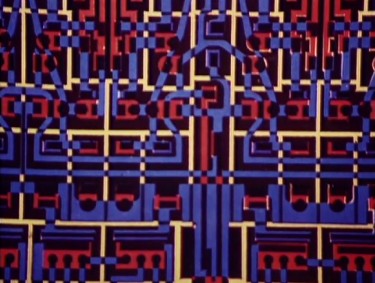



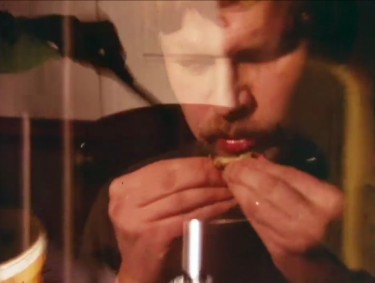
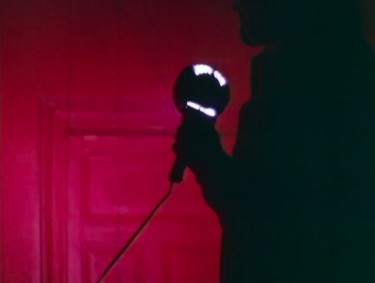


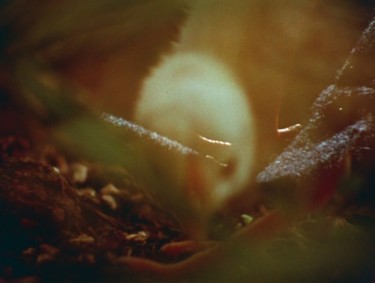
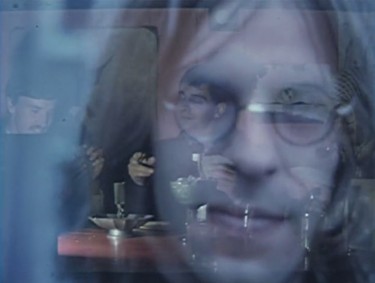
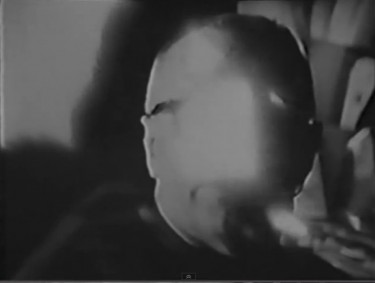

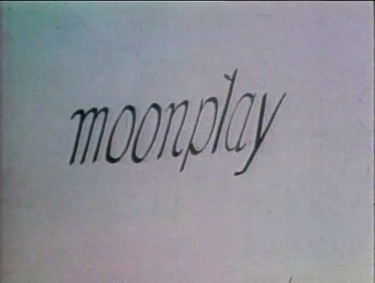
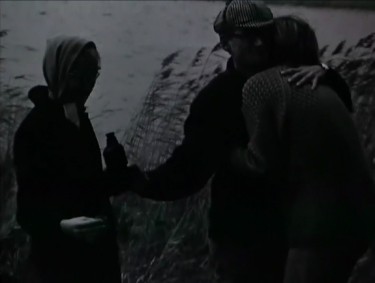

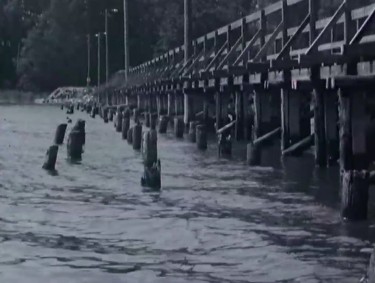
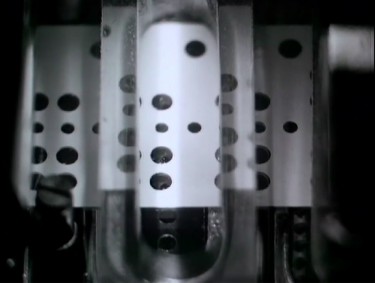
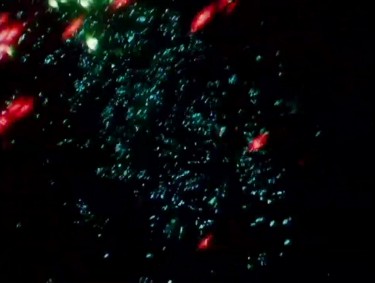
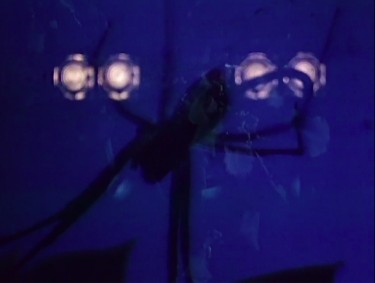
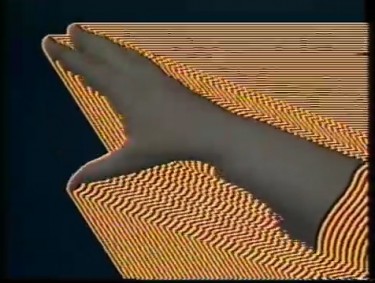
1 Comment
I suggest that you take a look at my articles “Space, self, and the theater of consciousness” and “Where Am I? Redux”, here:
http://people.umass.edu/trehub